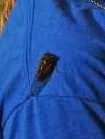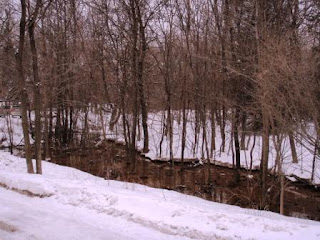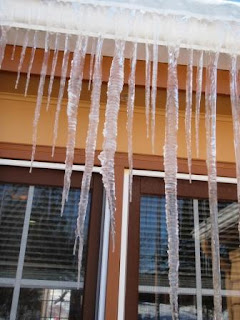A new generation of squirrels have all the daring of Evil Kenieval and the acrobatic skills of the Wallendas. It took awhile to figure out how they were getting into the feeder, but using my superior observation skills (ha!), I figured it out. Imagine inching yourself out to the tip of a branch no bigger around than your pinkie finger. You begin bouncing up and down slowly, making the branch drop closer to the peak of the feeder. It's still a good five feet between the bobbing branch and the feeder, but you're a daredevil squirrel and with glee, you launch yourself off the branch. You land - SMACK - on the peak and now it's easy-peasy - let the feasting begin. At least until a crazed human comes charging out the door to chase you from the feeder.
This cycle of squirrels invading and me yelling went on for a few days. My brother-in-law joined the battle. He brought a pole saw and snip-snip (really more like saw-saw) the duplicitous branch was gone. Problem solved. Or so we thought. Jason wasn't gone a half an hour and - you guessed it - squirrel in the feeder. The next day the mulberry tree got a pruning. The branches closest to feeder were gone.
You'd think it was the end of the war. For the squirrels, it was just a lost battle - the war wasn't over. These squirrels really want the seed. With the original branch gone, they switched to a higher one. Fewer squirrels are willing to risk the leap, though. Christmas Day the family watched as one squirrel after the other would scamper up the trunk, shimmy out on the branch and then debate how badly it wanted the seed. And in most cases, it would give up. But there are a few who dare.
The war will continue. There will be days when a squirrel gets in. But not for long - my vigilance will be unending. And maybe come springtime, I'll move the feeder. There's only so many branches you can trim before you're left with a stick.









































